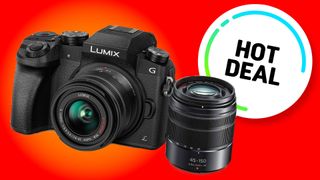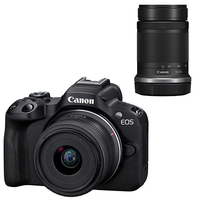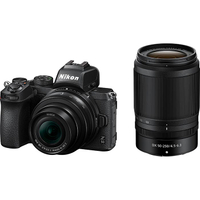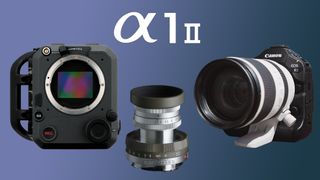Saving money on a product is great, of course. However, if you're investing in a camera for the first time, there is a better approach to trying to find a camera deal and then trying to find a lens deal to match it – and the answer is to buy a twin-lens kit.
If you're unfamiliar with the term, this means a bundle that includes a camera (usually with an APS-C sensor) and two "kit lenses". These are general-purpose optics that cover one of two focal ranges: standard and telephoto.
A standard kit lens typically covers something like 18-55mm, which is the equivalent of 27-82.5mm in full frame terms – or 28.8-88mm for Canon, whose APS-C sensors possess a 1.6x crop (rather than the standard 1.5x crop used by Nikon, Sony, Fujifilm and others). This is great for everything from wide-angle landscape shots, to street photography and reportage, to portraiture.
A telephoto kit lens picks up where the standard leaves off, usually covering something in the range of 55-250mm, which is 82.5-375mm or 88-400mm for Canon – perfect for long-range photography of subjects like wildlife.
Usually a camera comes bundled with just one of these kit options (typically the standard as that's the most widely used). Looking for a twin kit lens option offers great value, but more than that it means that you won't need to buy another lens unless you really, really want to – after all, you have an enormous 18-250mm range, covering pretty much all the photography bases!
The best twin lens kit camera deals
Canon EOS R50 twin lens kit | was £1,099 | now £929
Save £270 With a 24.2MP sensor, oversampled 4K, 15fps bursts and advanced AF, the R50 is a great all-rounder. The RF-S 18-45mm f/4.5-6.3 and RF-S 55-210mm f/5-7.1 lenses are both image stabilized, for smooth shooting.
Nikon Z50 twin lens kit | was £1,249 | now £999
Save £249 at Amazon The 20.9MP Z50 comes with stabilized Z DX 16-50mm f/3.5-6.3 and Z DX 50-250mm f/4.5-6.3 lenses, giving you everything from wide-angle to telephoto without any gaps.
Kit lens limitations
So what's the catch? Well, historically, kit lenses weren't great quality – they were made to create budget-friendly kits with entry-level cameras, so performance came second to price.
These days, however, kit lenses are by no means bad lenses! They often boast great optical performance, and they are super compact and lightweight, making them the perfect companion to a starter or intermediate camera system.
Get the Digital Camera World Newsletter
The best camera deals, reviews, product advice, and unmissable photography news, direct to your inbox!
Still, in order to maintain that size, weight, affordability and quality, the tradeoff is speed. Kit lenses are not very "fast", which means the aperture usually only opens up to f/3.5 or f/4.5. In simple terms, this means that they don't blur the backgrounds as much as faster lenses (with apertures like f/2.8 or f/1.8), and you need to shoot with a slower shutter speed in order to work in low light conditions.
There are ways around both points. You can, for example, increase the amount of blur by increasing the distance between your subject and the background. And to compensate for the slower aperture (without raising your ISO, which degrades image quality), many kit lenses offer image stabilization (IS) that counteracts the effect of camera shake while shooting at slower speeds.
Many people who buy these kinds of cameras don't actually end up buying more lenses. However, there are some things that kit lenses simply can't do.
Macro photography is one of them, so to shoot super close-ups, you'll need to invest in a macro lens. If you want to shoot at extreme distances, a super telephoto lens will be necessary. To cover fast action, like sports or birds, you'll need a fast aperture, which means a dedicated lens for sports or lens for birds. And for portraiture with the most buttery-smooth backgrounds, you'll have to look at a portrait lens.
That said, those are the kinds of specialisms that come further down a photography journey. The first thing you need is a camera with lenses that cover all the bases – and the best way to achieve that from day one is with a twin lens kit!








